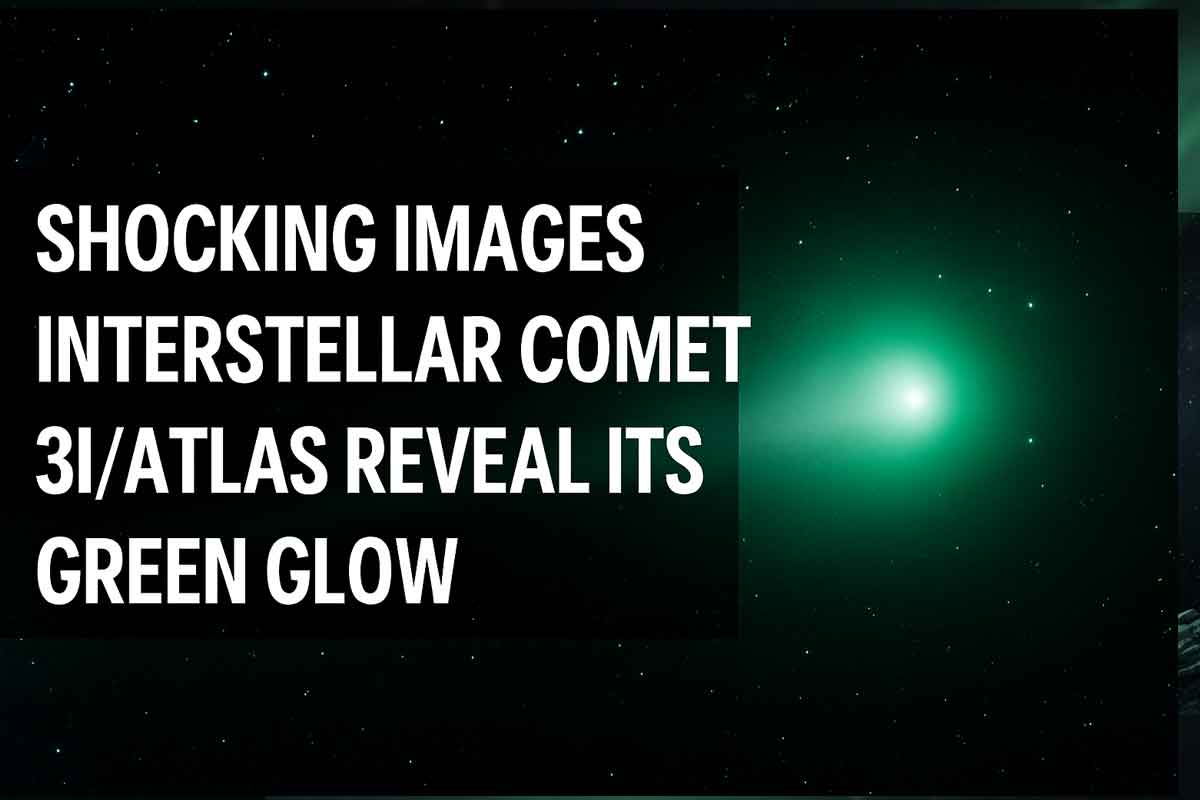The mysterious interstellar comet 3I/ATLAS has once again captured the attention of astronomers worldwide. Recently released images from the Japanese space agency (JAXA) and NASA show the comet’s glowing green hue and unusual trajectory, offering fresh insights into its cosmic origins and movement.
About Interstellar Comet 3I/ATLAS
Comet 3I/ATLAS is the third known interstellar object to pass through our solar system, following ‘Oumuamua (1I) and Borisov (2I). Discovered in late 2024 by the ATLAS survey in Hawaii, this comet has become a scientific curiosity due to its distinct color, speed, and chemical composition — unlike typical comets born within our solar system.
3I/ATLAS Images Released by Japanese Space Agency
JAXA recently published high-resolution images of 3I/ATLAS taken using an advanced space-based optical instrument. The visuals show a radiant green glow likely caused by diatomic carbon molecules (C2) being excited by sunlight. This glow, along with its faint, hidden tail, has left scientists debating whether solar radiation or interstellar dust interactions are shaping its appearance.
Discovery and Identification
The comet was first spotted by the Asteroid Terrestrial-impact Last Alert System (ATLAS) on Earth. Its hyperbolic orbit — meaning it’s not gravitationally bound to our Sun — confirmed its interstellar origin. NASA later verified its trajectory using data from multiple observatories around the globe.
Origin and Interstellar Journey
Researchers believe 3I/ATLAS originated in another star system millions of years ago. Its long journey through interstellar space likely altered its outer layer, exposing irradiated ices and compounds that create its distinctive glow. The comet’s path indicates it is merely passing through, never to return again.
Movement and Visibility
Currently, interstellar comet 3I/ATLAS is moving at a high velocity of over 30 km/s relative to the Sun. It’s visible through medium-sized telescopes in the northern sky during pre-dawn hours. Its brightness fluctuates slightly as it reacts to solar radiation, but scientists predict it will remain observable for several months.
Scientific Importance
For researchers, 3I/ATLAS represents a rare opportunity to study interstellar chemistry. Its spectrum analysis reveals traces of carbon monoxide, cyanogen, and possibly rare organic molecules. Such data helps scientists understand how comets form in other star systems and how interstellar matter travels between galaxies.
Observation Tips for Skywatchers
- Use a telescope with at least 6-inch aperture for a clear view.
- Best visibility is around 4–5 a.m. local time in dark, clear skies.
- Use sky-mapping apps to locate the comet’s real-time position.

Can 3I/ATLAS Be Seen Without a Telescope?
While some bright comets become visible to the naked eye, 3I/ATLAS is too faint for unaided observation. Binoculars may help in areas with minimal light pollution, but a telescope remains the best tool to catch a glimpse of this interstellar traveler.
Safety and Prevention Tips for Sky-Watchers
- Avoid using high-intensity lasers or bright lights during observation.
- Protect eyes from prolonged exposure to telescope lenses.
- Set up telescopes on stable ground to prevent accidents in dark areas.
Disclaimer
The information in this article is based on scientific updates from NASA, JAXA, and other observatories as of November 2025. Visibility and observation details may vary depending on your location and atmospheric conditions.
FAQs on Interstellar Comet 3I/ATLAS
Q1: What makes 3I/ATLAS an interstellar comet?
A1: Its hyperbolic orbit and speed indicate that it entered our solar system from another star system, making it an interstellar visitor.
Q2: Why does 3I/ATLAS glow green?
A2: The green color comes from the breakdown of diatomic carbon and cyanogen gases when exposed to sunlight, a common trait of some distant comets.
Q3: Will 3I/ATLAS ever return to our solar system?
A3: No. Its trajectory shows it will exit the solar system permanently after a brief pass near the Sun, continuing its journey into deep space.


